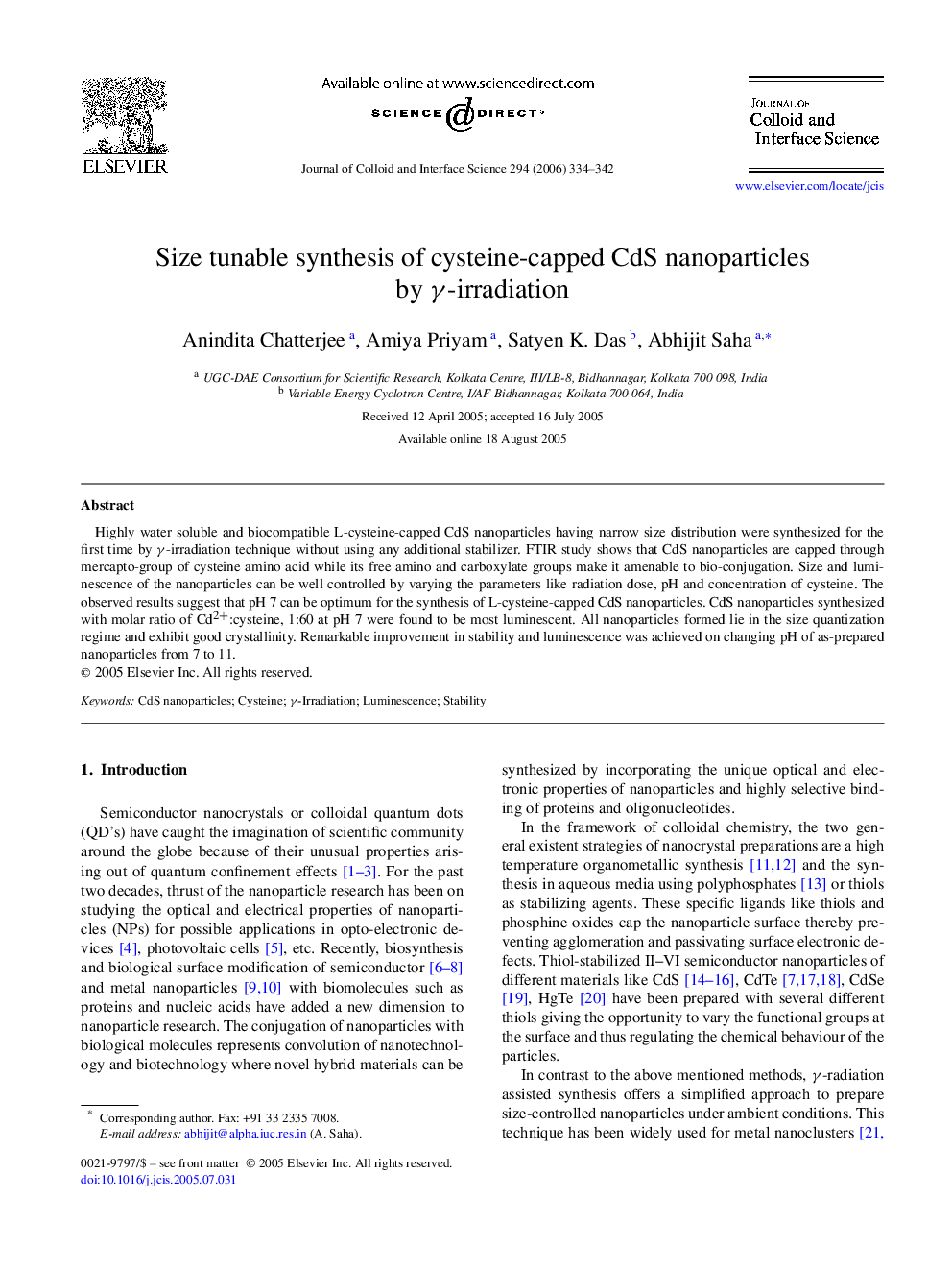| Article ID | Journal | Published Year | Pages | File Type |
|---|---|---|---|---|
| 613965 | Journal of Colloid and Interface Science | 2006 | 9 Pages |
Highly water soluble and biocompatible L-cysteine-capped CdS nanoparticles having narrow size distribution were synthesized for the first time by γ-irradiation technique without using any additional stabilizer. FTIR study shows that CdS nanoparticles are capped through mercapto-group of cysteine amino acid while its free amino and carboxylate groups make it amenable to bio-conjugation. Size and luminescence of the nanoparticles can be well controlled by varying the parameters like radiation dose, pH and concentration of cysteine. The observed results suggest that pH 7 can be optimum for the synthesis of L-cysteine-capped CdS nanoparticles. CdS nanoparticles synthesized with molar ratio of Cd2+:cysteine, 1:60 at pH 7 were found to be most luminescent. All nanoparticles formed lie in the size quantization regime and exhibit good crystallinity. Remarkable improvement in stability and luminescence was achieved on changing pH of as-prepared nanoparticles from 7 to 11.
Graphical abstractFigure optionsDownload full-size imageDownload as PowerPoint slide
